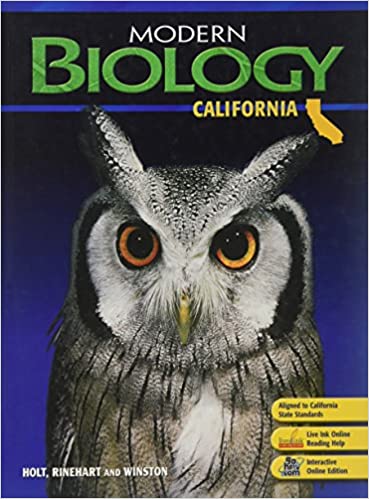
Holt Modern Biology 1st Edition by John Postlethwait ,Janet Hopson
Edition 1ISBN: 9780030651786
Holt Modern Biology 1st Edition by John Postlethwait ,Janet Hopson
Edition 1ISBN: 9780030651786 Exercise 2
List the hierarchy of organization in a snowy owl.
Explanation
Living organisms or biological organisms range themselves on a scale from small to large following a hierarchy of highly complex biological structures and systems.
The atom is the smallest and the most fundamental unit in the hierarchy, followed by molecules whose chemical structure consists of at least two atoms held together by chemical bonds. Molecules give rise to macromolecules and eventually, at the end of the hierarchy, come the biosphere.
Each level in the hierarchy represents an increase in the organizational complexity. For example, the atom forms molecules, and the molecules form macromolecules. Macromolecules aggregate together, and get surrounded by membranes giving rise to an organelle. Organelle lies at the sub-cellular level and give rise to cells which are the basic unit of all life.
Cells form tissues which are the functional grouping of cells and tissues form organs , which are a group of tissues performing a common function. Many functionally related organs form the organ system in an organism. An organism is an individual living entity formed of lower level of components of the hierarchy.
The hierarchy of organization in a snowy owl is as follows:
Organism- Snowy owl
Organ- Owl's ear
Tissue- Nervous tissue within ear
Cell- Neuron or nerve cell
Organelle- Mitochondria
Biological molecule- Phospholipid
Atom- Oxygen
The atom is the smallest and the most fundamental unit in the hierarchy, followed by molecules whose chemical structure consists of at least two atoms held together by chemical bonds. Molecules give rise to macromolecules and eventually, at the end of the hierarchy, come the biosphere.
Each level in the hierarchy represents an increase in the organizational complexity. For example, the atom forms molecules, and the molecules form macromolecules. Macromolecules aggregate together, and get surrounded by membranes giving rise to an organelle. Organelle lies at the sub-cellular level and give rise to cells which are the basic unit of all life.
Cells form tissues which are the functional grouping of cells and tissues form organs , which are a group of tissues performing a common function. Many functionally related organs form the organ system in an organism. An organism is an individual living entity formed of lower level of components of the hierarchy.
The hierarchy of organization in a snowy owl is as follows:
Organism- Snowy owl
Organ- Owl's ear
Tissue- Nervous tissue within ear
Cell- Neuron or nerve cell
Organelle- Mitochondria
Biological molecule- Phospholipid
Atom- Oxygen
Holt Modern Biology 1st Edition by John Postlethwait ,Janet Hopson
Why don’t you like this exercise?
Other Minimum 8 character and maximum 255 character
Character 255


